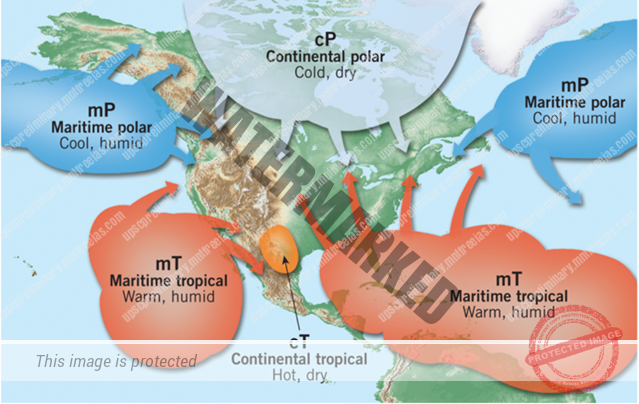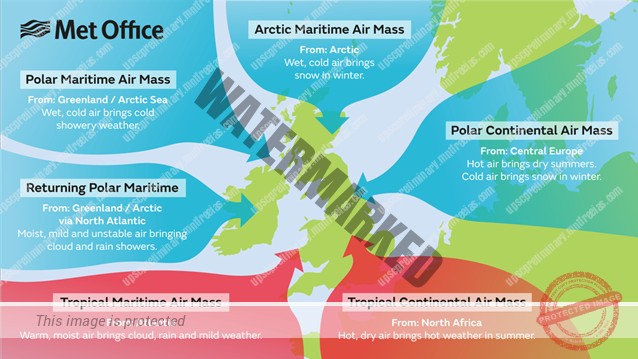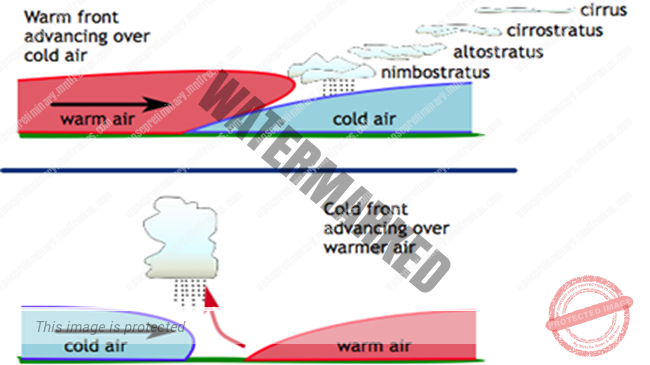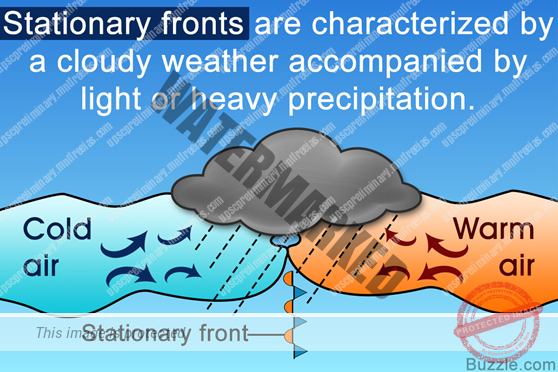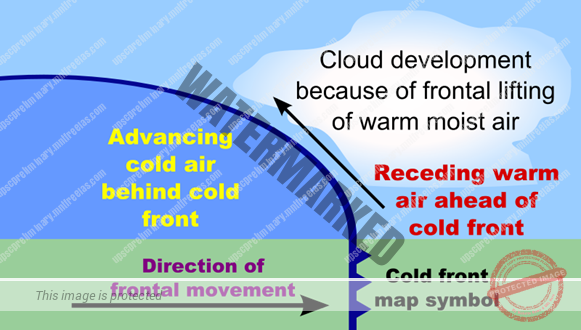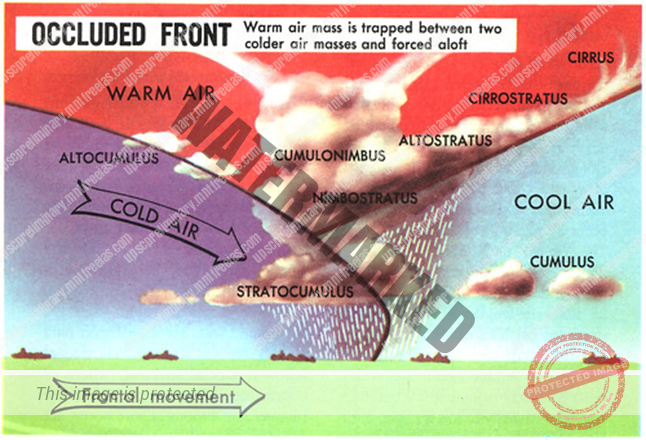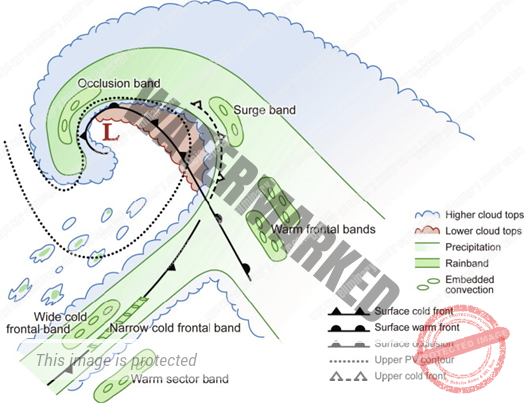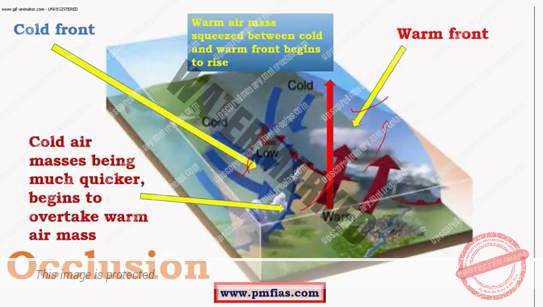- AIR MASSES
- FRONTS
UNIT 4 – CLIMATOLOGY – PART 22
AIR MASSES
When the air remains over a homogenous area for a sufficiently longer time, it acquires the characteristics of the area. The homogenous regions can be the vast ocean surface or vast plains. The air with distinctive characteristics in terms of temperature and humidity is called an AIRMASS. It is defined as a large body of air having little horizontal variation in temperature and moisture.
The homogenous surfaces, over which air masses form, are called the source regions.
The air masses are classified according to the source regions.
There are FIVE MAJOR SOURCE REGIONS. These are:
- Warm Tropical and Subtropical Oceans.
- The Subtropical Hot Deserts.
- The Relatively Cold High Latitude Oceans
- The Very Cold Snow-Covered Continents In High Latitudes
- Permanently Ice-Covered Continents In The Arctic And Antarctica.
Accordingly, following types of airmasses are recognised:
- Maritime Tropical (Mt).
- Continental Tropical (Ct).
- Maritime Polar (MP).
- Continental Polar (Cp).
- Continental Arctic (Ca).
Tropical air masses are warm and polar air masses are cold.
FRONTS
When two different air masses meet, the boundary zone between them is called a FRONT. The process of formation of the fronts is known as frontogenesis.
There are Four Types of Fronts:
(a) Cold.
(b) Warm.
(c) Stationary.
(d) Occluded
When the front remains stationary, it is called a STATIONARY FRONT.
When the cold air moves towards the warm air mass, its contact zone is CALLED THE COLD FRONT,
whereas if the warm air mass moves towards the cold air mass, the contact zone is a warm front.
If an air mass is fully lifted above the land surface, it is CALLED THE OCCLUDED FRONT.
The fronts occur in middle latitudes and are characterised by steep GRADIENT IN TEMPERATURE AND PRESSURE.
They bring abrupt changes in temperature and cause the air to rise to form clouds and cause precipitation.
The Extra-Tropical Cyclones are storm systems emerging in the mid and high latitudes, away from the tropics.
- They are low-pressure systems with associated Cold Fronts, Warm Fronts, And Occluded Fronts.
- These cyclones are formed along the POLAR FRONT.
- These cyclones move from west to east but tropical cyclones, move from east to west.
- In the beginning, the front is stationary.
- Extra-tropical cyclones are also known as MID-LATITUDE STORMS OR BAROCLINIC STORMS.
- In the Northern hemisphere, cold air blows from the north of the front and warm air blows from the south.
- When the pressure descents along the front, the cold air move towards the south and the warm air moves northwards setting in motion an anticlockwise cyclonic circulation.
- The cyclonic circulation results in a well-built extratropical cyclone, with a cold front and a warm front.
- The warm air climbs over the cold air and a series of clouds appear over the sky ahead of the warm front and cause rainfall.
- The cold front approaches the warm air from behind and pushes the warm air up.
- As an outcome, cumulus clouds develop along the cold front.
- The cold front moves faster than the warm front eventually surpassing the warm front.
- The warm air is entirely lifted up and the front is occluded, and the cyclone dissipates.
- They can originate over the land and sea and cover a larger area.
- This cyclone affects a much larger area as compared to the tropical cyclone.
- The velocity of wind in a tropical cyclone is much higher and it is more damaging.
